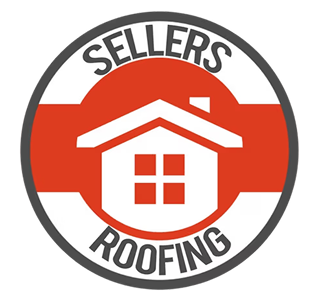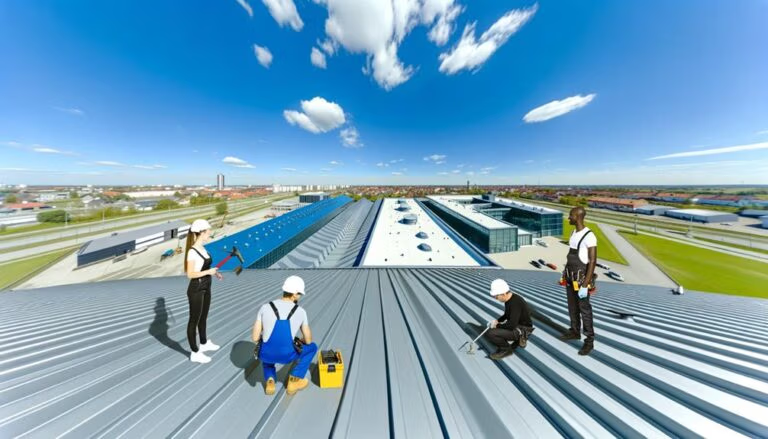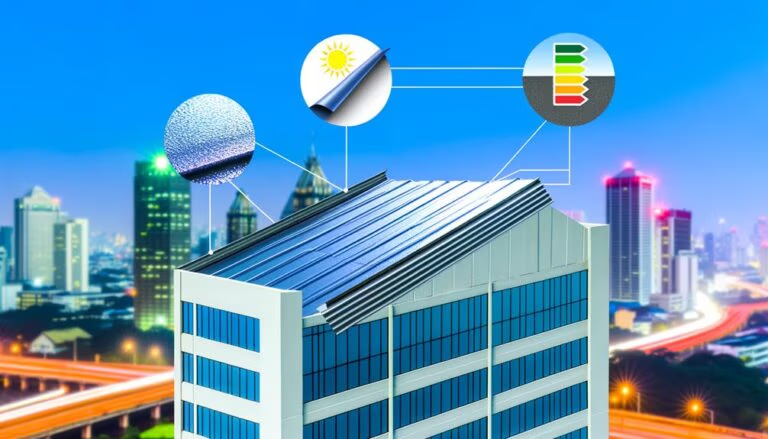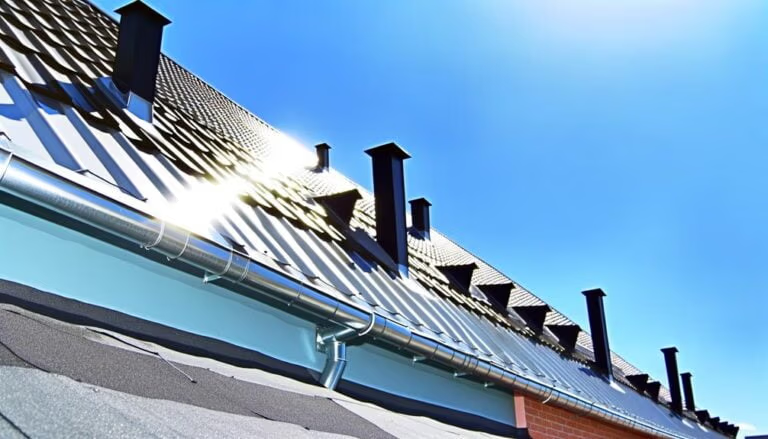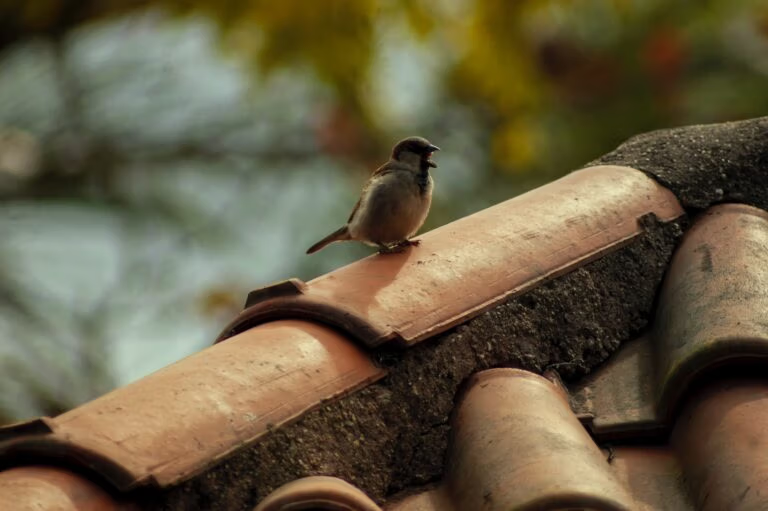Essential Tips for Spotting Roof DamageTable Of Contents:
- Spot Signs of Roof Damage Early
- What Roof Damage Looks Like
- How to Do Roof Inspection
- Keeping an Eye on Your Roof
- Impact of Weather on Your Roof
- How Roof Materials Affect Damage
- Recognizing Hidden Roof Damage
- Conclusion
Spot Signs of Roof Damage Early
Is your roof starting to show signs of wear? Spotting issues early can save you from costly repairs later. In this post, we will discuss what a damaged roof looks like, how to conduct a thorough roofinspection, and the impact of weather on your roofing materials. By understanding these key aspects, you’ll be better prepared to recognize problems like moss growth or failing slate shingles before they escalate. Engaging with this content will equip you with practical knowledge to maintain your roof effectively and know when to call a roofing contractor.
What Roof Damage Looks Like
Identifying roof damage early is crucial for maintaining your home. Signs can include atticleaks, blistering or peeling paint, and noticeable stains on ceilings and walls. Additionally, look for sheathing decay, shingle damage, and dark streaks that may indicate underlying issues. Whether you have metalsiding or other materials, being aware of these symptoms can help you address potential leaks caused by wind and other factors in your residential roofing.
AtticLeaks
When I conduct a roofinspection, one of the first signs I look for is any evidence of atticleaks. This issue often manifests as water stains on the ceiling or walls, indicating that water damage may have compromised the roof‘s integrity. It’s crucial to address these leaks promptly to prevent more extensive damage and avoid costly repairs down the line.
In my experience, skylights are a common area where leaks develop. If a skylight is improperly installed or damaged, it can lead to significant water intrusion in the attic. I recommend regular checks around these structures to identify potential weaknesses and ensure a roofer resolves any issues before they escalate.
To effectively combat atticleaks, proactive maintenance is key. Regular roof inspections can help identify minor issues before they become serious, allowing homeowners to take action and prevent water damage from spreading. By staying vigilant about the condition of your roof, you can protect your home and extend the life of your roofing system.
Blistering or Peeling Paint
Blistering or peeling paint on your home’s exterior is often a sign of underlying roofing issues. When moisture from roofleaks accumulates, it can lead to the deterioration of paint, especially around vulnerable areas like chimneys. During my roof inspections, I regularly point out that addressing these signs early can save homeowners from costly repairs associated with water damage and mold growth.
Additionally, loose debris or pests in the roof area can contribute to paint deterioration. If I notice areas where paint is bubbling or peeling, it may indicate an unchecked pest problem or improper maintenance. Keeping the roof clear of debris and conducting regular inspections helps in maintaining the roof‘s integrity.
Ultimately, spotting issues like blistering or peeling paint should prompt homeowners to take action. Ensuring that your metalroof remains in good condition not only protects your investment but also enhances your home’s appearance. If you observe these warning signs, it’s wise to consult a professional to assess the roof‘s condition and implement necessary repairs:
- Look for signs of moisture around chimneys.
- Keep areas around the roof free from debris.
- Inspect for pest activity that may compromise the roof.
Ceiling and Wall Stains
Ceiling and wall stains can be significant indicators of roofhail damage or leaks that require immediate attention. When I observe stains on ceilings or walls, it often signals compromised flashing or issues within the roofing system that need investigation. Ignoring these warning signs can lead to further hazards, such as mold growth or structural damage throughout the attic space.
During my inspections, I’ve seen that stains can result from water seepage, particularly after hail events where the roof‘s integrity may have been weakened. I emphasize the importance of checking for water damage around potential trouble spots such as chimneys or vents, where flashing may fail or allow moisture to penetrate. Tackling these problems early ensures that homeowners avoid costly repairs related to water damage.
In many cases, homeowners may overlook ceiling and wall stains due to their gradual appearance. It’s vital to adopt a proactive approach by scheduling regular roof evaluations. Addressing these issues swiftly helps prevent attic damage and enhances the durability of your roofing system.
| Sign | Possible Cause | Action |
|---|---|---|
| Ceiling Stains | Roof hail damage or flashing failure | Inspect roof and flashing integrity |
| Wall Stains | Water seepage from leaks | Identify and repair the source of leaks |
Sheathing Decay
Sheathing decay often represents a serious issue that can compromise your roofing system’s overall integrity. During my inspections, I have observed that wood sheathing, particularly under asphalt shingles, is susceptible to moisture damage, leading to rot and structural weakness. If I notice signs of decay, it’s essential to assess whether roof replacement might be required to ensure long-term safety and stability.
In condominiums, I frequently stress the importance of regular maintenance to prevent sheathing issues. Decayed sheathing not only impacts the roof‘s performance but can also affect adjoining units, leading to costly repairs for multiple homeowners. By inspecting the sheathing regularly, we can identify any emerging concerns and address them promptly instead of facing extensive replacement costs in the future.
Addressing sheathing decay early on can save homeowners from more extensive damage and expensive roofing projects. If you suspect your roof may be compromised, I recommend consulting a professional to evaluate the condition of your sheathing and, if necessary, replace it to restore the roof‘s protective capabilities. Taking proactive measures ensures that your roofing system continues to function effectively and maintains its value over time.
Shingle Damage
Shingle damage is a common issue that I encounter during roof inspections. Whether it’s wood shingles warping, curling, or missing altogether, these signs often indicate that the protective layer of your roof is compromised. It’s essential to address any damage promptly to prevent further problems with the underlying materials, such as the fascia or sheathing, which can lead to costly repairs in the future.
In my experience, local roof repair contractors often find that wood shingles are particularly vulnerable to environmental factors like heavy rain and extreme temperatures. Regular assessments can identify early signs of wear and tear, allowing for timely maintenance before significant damage occurs. A proactive approach not only safeguards your home but also aligns with your homeowner’s insurance policy, which may cover repairs if they are reported early.
When I spot shingle damage, I encourage homeowners to seek professional help right away. Replacing damaged shingles can effectively protect your roof‘s integrity and extend its lifespan. If you suspect that your shingles have been compromised, don’t hesitate to reach out to local roof repair contractors who can assess and rectify the problem efficiently.
| Sign of Damage | Possible Cause | Recommended Action |
|---|---|---|
| Curling or Warping Shingles | Age or exposure to moisture | Inspect roof and consider replacement |
| Missing Shingles | Severe weather or poor installation | Replace missing shingles promptly |
| Staining on Wood Shingles | Mold or water damage | Evaluate shingles and clean or replace as needed |
Dark Streaks
Dark streaks on your roof can often seem like a minor nuisance, but they typically indicate underlying issues that should not be ignored. In my experience, these streaks can arise from a build-up of mold or algae, thriving under moisture conditions created by condensation. Addressing these sources promptly is essential to maintaining your roof‘s longevity and protecting the overall integrity of your home.
Severe weather can exacerbate the development of dark streaks, as heavy rain and wind can lead to increased moisture accumulation. During my roof inspections, I remind homeowners to check the soffit areas, as they can be entry points for moisture that contribute to streak formation. Simply cleaning these areas can help mitigate potential mold growth and improve your roof‘s appearance.
Recognizing the signs of dark streaks early on allows homeowners to take proactive measures to prevent further damage. If you see these streaks, I recommend contacting a professional for a free estimate. Addressing the issue quickly not only improves your roof‘s look but also ensures that your entire roofing system remains healthy and functional over time:
| Indicator | Possible Cause | Recommended Action |
|---|---|---|
| Dark Streaks | Mold or algae growth from condensation | Schedule a roof inspection and cleaning |
| Increased Streaking | Severe weather conditions | Inspect soffit areas and maintain regularly |
How to Do RoofInspection
To effectively spot signs of roof damage early, having the right tools for a comprehensive evaluation is essential. I will guide you through a step-by-step inspection process, focusing on how to identify roof damage, including signs of leaks, mildew, and wear. Additionally, I’ll discuss common issues that arise after a storm and when to seek professional help for any significant concerns.
Tools for a Comprehensive Evaluation
When I conduct a roofinspection, one essential tool I always have on hand is a moisture meter. This device allows me to accurately measure moisture levels within the roofing materials, helping to identify areas where water may be seeping through. High moisture readings can be a direct indicator of underlying issues, such as leaks that could lead to significant damage if not addressed promptly.
I also find that a sturdy ladder is vital for safely accessing the roof. Having a reliable ladder enables me to examine the roof‘s surface closely while inspecting for wear and tear, cracked shingles, or even the presence of algae. By getting a closer look at the roof, I can gather more detailed information about its condition and recognize any potential problems earlier.
In addition to the basic tools, I recommend carrying a digital camera or smartphone to document any signs of damage during the inspection process. Capturing images of trouble spots, like staining on the ceiling or areas affected by algae growth, provides valuable evidence that can be shared with homeowners. This visual documentation makes it easier to discuss necessary repairs and helps homeowners understand the urgency of any issues found.
Step-by-Step Inspection Process
To start the roofinspection, I recommend checking the gutters for debris, which often collects after a storm or snowfall. Clearing these areas not only prevents potential water damage but also allows a better view of any issues on the roof itself. Keeping gutters clean is essential for ensuring proper water flow and protecting your roofing materials from prolonged moisture exposure.
Next, I suggest inspecting the roof surface for any visible signs of storm damage or wear. Look for damaged shingles, cracks, or areas where wildlife might have created entry points. It’s important to address these issues promptly, as they can lead to leaks and compromise your roof‘s energy efficiency over time.
Finally, I emphasize the significance of checking attics and ceilings for any signs of moisture or staining. These indicators often reveal underlying problems that may require immediate roof repair. Understanding the roof‘s condition through thorough inspections helps in early detection and can prevent more extensive repairs down the road:
| Inspection Area | What to Look For | Recommended Action |
|---|---|---|
| Gutters | Debris accumulation | Clear to ensure proper drainage |
| Roof Surface | Damaged shingles or cracks | Inspect for storm damage, consider repairs |
| Attics/Ceilings | Moisture signs or stains | Assess and address potential leaks |
Identifying Common Issues
During my inspections, I often identify stains on ceilings or walls that indicate potential roof problems. These stains are typically caused by leaks, which can stem from damaged flashing, shingles, or poor ventilation. Recognizing these stains early allows homeowners to take action to prevent more extensive damage that can lead to costly repairs later on.
Another common issue I encounter is inadequate ventilation. Proper airflow in the attic is essential for reducing humidity and preventing moisture accumulation, which can contribute to roof decay. I advise homeowners to inspect their ventilation systems regularly to ensure they are functioning effectively, thereby supporting the overall health of their roofing structure.
Additionally, I encourage homeowners to be vigilant about checking for signs of wear around roof vents. Cracks or deterioration around these entry points can result in water seepage and subsequent water damage. Timely inspections and addressing any issues related to ventilation not only enhance the longevity of your roof but also maintain a healthier environment within your home.
When to Seek Professional Help
If you notice significant signs of roof damage, such as extensive staining, missing shingles, or visible sagging, it’s time to seek professional help. These issues can indicate major problems requiring immediate attention, as they can lead to more severe damage to your home’s structure and interior. When I encounter such signs during inspections, I often recommend that homeowners consult a qualified roofing contractor to assess the situation thoroughly.
Another instance when I advise homeowners to reach out to professionals is after extreme weather events, such as hail storms or heavy winds. I have seen how these conditions can compromise a roof‘s integrity even if no apparent damage is evident. Having a skilled roofer conduct a detailed inspection can identify hidden issues, ensuring that your roof remains secure and functional.
Proactive measures are important, but they sometimes require expert input. If you find consistent leaks or recurring issues after performing your own inspections, it’s wise to involve a professional. Their expertise can provide you with long-term solutions and peace of mind, allowing you to focus on other aspects of maintaining your home without the worry of potential roofing failures.
Keeping an Eye on Your Roof
Regular maintenance is key to preventing roof damage, and I emphasize the importance of seasonal checks. By monitoring signs of wear and tear, such as cracked shingles or moisture buildup, you can take prompt action. In this section, I will share practical tips for maintenance, highlight key seasonal checks for damage, and outline specific signs to keep an eye on for optimal roof health.
Regular Maintenance Tips
Regular roof maintenance plays a critical role in spotting signs of damage early. I recommend conducting visual inspections at least twice a year to check for any loose shingles, debris buildup, or signs of wear around flashing. These proactive efforts help ensure that small issues do not escalate into more significant problems that could require costly repairs later.
During my maintenance checks, I pay special attention to gutters and downspouts, as clogged gutters can cause water to back up and damage the roof over time. It’s essential to clear any leaves or debris from these areas to promote proper water drainage. This simple step can prevent unnecessary stress on your roofing materials and minimize the risk of leaks in the future.
Understanding the signs of potential roofing issues is vital for maintaining the integrity of your home. I always advise homeowners to stay vigilant for any visible changes, such as dark streaks or stains, which may indicate underlying moisture problems. By recognizing these signs early and addressing them promptly, you can protect your investment and extend the life of your roofing system effectively.
Seasonal Checks for Damage
I recommend conducting seasonal checks on your roof, particularly after extreme weather changes. In the fall, falling leaves can clog gutters and downspouts, leading to water buildup that may harm your roofing materials. It’s important to clear out debris to promote proper drainage, which can help prevent roofing issues later on.
As winter approaches, I suggest inspecting your roof for any signs of damage or wear that could worsen with snow accumulation. This includes checking for loose shingles or any visible cracks that could allow moisture to penetrate. Addressing these issues quickly ensures that the roof remains intact during harsh winter conditions.
In the spring, it’s beneficial to reassess your roof following the winter months. Look for any signs of leaks or damage created by melting snow, which might present themselves as stains on ceilings or walls. By staying proactive and addressing issues seasonally, you maintain the integrity of your roofing system and avoid costly repairs down the road.
Signs of Wear and Tear to Monitor
One of the key signs of wear and tear I always recommend monitoring is the condition of your shingles. Cracked, curled, or broken shingles can indicate that your roof is losing its protective layer, which may lead to leaks. By keeping an eye on these visible signs, you can address potential issues before they escalate into more significant problems.
Another critical indicator I pay attention to is the state of the flashing around chimneys and vents. If I notice any deterioration or separation of the flashing, it can compromise the roof‘s integrity and result in leaks. Regular checks around these vulnerable areas can save you from costly repairs and unexpected water damage to your home’s interior.
Lastly, I emphasize the importance of monitoring for dark streaks or stains on your roof. These marks can be a sign of algae or mold growth, which thrive in moist conditions. Acting quickly to address these issues not only improves your roof‘s appearance but also prevents further decay and extends the life of your roofing system.
Impact of Weather on Your Roof
Severe weather can have a significant impact on your roof‘s integrity, making it vital to assess storm damage right after a weather event. Snow and ice accumulation can lead to leaks and structural issues, while prolonged sun exposure may cause wear and fading. Understanding these effects helps in identifying potential problems early, allowing for timely repairs and maintenance.
Assessing Storm Damage
After a storm, the first step I take is to conduct a thorough assessment of the roof’s surface and structure. High winds can cause shingles to lift, break, or even blow off entirely, which compromises the protective barrier of your roof. By identifying these vulnerabilities promptly, I can help homeowners take necessary action before more extensive damage occurs.
Water intrusion is another major concern following severe weather events. I make it a point to check for any visible leaks in the attic or noticeable water stains on ceilings and walls. These signs often indicate that the flashing or roofing materials may have been compromised during the storm, requiring immediate attention to prevent mold growth and additional structural issues.
I also pay attention to the condition of the gutters and downspouts after a storm. Blockages from debris or damage can lead to improper water drainage, which increases the risk of leaks and further deterioration of roofing materials. By ensuring proper water flow and drainage, I can help maintain the long-term integrity of the roofing system and protect the home from unexpected repairs.
Effects of Snow and Ice
Snow and ice can exert significant pressure on roofing systems, especially when heavy accumulations occur. This weight can lead to sagging beams and material failure, creating vulnerabilities that may not be immediately visible. I’ve encountered instances where roofs, burdened by excessive snow, experience catastrophic failures that could have been prevented through timely inspections and maintenance.
Ice dams can form along the edges of the roof, preventing proper drainage and causing water to back up under shingles. This can lead to leaks and extensive water damage in the attic or inside the home. I recommend that homeowners be vigilant about clearing gutters and ensuring adequate insulation to reduce the likelihood of ice dams forming, fostering a healthier roofing environment.
After winter storms, I advise conducting thorough roof evaluations to assess any damage caused by snow and ice. This proactive approach helps identify issues early, such as cracked shingles or compromised flashing, allowing for prompt repairs before they escalate into costlier problems. Recognizing these signs and taking action can maintain a roof’s integrity and extend its lifespan, ultimately protecting your investment.
Understanding Sun Damage
Sun exposure can significantly impact the lifespan and effectiveness of your roof. Over time, UV rays can cause roofing materials to become brittle and lose their protective granules, leading to deterioration. I have seen roofs that have aged prematurely due to excessive sun exposure, which highlights the importance of regular inspections and maintenance to catch these issues early.
In my experience, asphalt shingles are particularly vulnerable to sun damage. I often recommend homeowners pay close attention to the color and texture of their shingles. If they start to fade or feel rough to the touch, it might be time to consult a professional about potential replacement or repair options to maintain the roof’s integrity.
Recognizing sun damage can help prevent more severe issues, such as leaks and structural damage. It’s crucial to adopt a proactive approach by conducting seasonal inspections and addressing any signs of wear promptly. If you notice any significant changes or have concerns about your roof‘s condition, I advise seeking professional assistance without delay:
- Inspect shingles for fading or brittleness.
- Check for granule loss in gutters.
- Ensure proper ventilation to reduce heat buildup.
How Roof Materials Affect Damage
Understanding how different roofing materials affect potential damage is vital for effective maintenance. I will discuss common roofing materials and their distinct vulnerabilities, the lifespan associated with various roof types, and how to identify specific issues linked to each material. Gaining insights into these topics allows homeowners to address concerns early and protect their investments effectively.
Common Roofing Materials and Their Vulnerabilities
Different roofing materials come with unique vulnerabilities that impact how easily I can identify signs of damage. For instance, asphalt shingles are common in residential roofing but can be prone to curling, cracking, and granule loss due to age and extreme weather. Regular inspections of these shingles can help prevent leaks and prolong roof life.
Metalroofing is another popular choice, known for its durability. However, it can still face challenges such as rusting and expansion due to temperature changes. I’ve seen cases where inadequate installation leads to gaps, causing water intrusion. It’s essential to monitor seams and fasteners regularly to ensure their integrity is intact.
Tile roofs offer exceptional longevity but can be susceptible to cracks from hail and heavy impacts. When I inspect tile roofs, I focus on areas with accumulated debris, as this can exacerbate the risk of damage. Addressing these vulnerabilities early can save homeowners from significant repairs down the line:
| Roof Material | Common Vulnerabilities | Inspection Tips |
|---|---|---|
| Asphalt Shingles | Curling, cracking, granule loss | Inspect regularly for wear and moisture issues |
| Metal Roofing | Rusting, expansion, inadequately sealed seams | Check for gaps and maintain fasteners |
| Tile Roofing | Cracks, debris accumulation | Monitor for debris and inspect tiles for damage |
Lifespan of Different Roof Types
The lifespan of roofing materials plays a significant role in determining how often homeowners need to conduct roof inspections. For example, asphalt shingles typically last around 15 to 30 years, depending on the quality and installation. Regularly checking for signs of wear, such as curling or granule loss, can help in addressing potential issues before they lead to leaks.
Metal roofs, known for their durability, can last 40 to 70 years with proper maintenance. However, I’ve noticed that improper installation or lack of upkeep can lead to rust and seam failures over time. It’s essential to monitor these aspects regularly, as early detection of rust can prevent more extensive damage that might require costly repairs.
Tile roofs, on the other hand, often have the longest lifespan, ranging from 50 to over 100 years. While they are generally robust, they can suffer damage from extreme weather or debris accumulation. I find that inspecting tile roofs for cracks and ensuring proper drainage helps maintain their longevity, contributing to a reliable roofing system for years to come.
Identifying Specific Material Issues
As I inspect roofs, I often encounter distinct issues that arise from specific materials. For instance, asphalt shingles are notorious for curling and losing granules over time, especially after exposure to harsh weather. Regularly checking for these signs can help homeowners address complications before they lead to leaks or other significant problems.
Metal roofs, while durable, can also present unique challenges. Rust formation is common, particularly in seams where water may gather. It’s important to frequently inspect these critical areas and ensure that fasteners are tightly sealed to ward off potential water intrusion and extend the roof‘s lifespan.
Tile roofs are typically resilient but can suffer from cracking due to impacts or extreme temperatures. During my assessments, I focus on any accumulated debris which can cause additional pressure and contribute to breakage. Being proactive about clearing debris and checking for cracks can significantly enhance the long-term durability of tile roofing systems.
Recognizing Hidden Roof Damage
Inspecting your attic is vital for identifying hidden roof damage before it escalates. Look for signs of interior damage such as water stains, mold, or deteriorating insulation. Understanding these indicators is crucial, as neglecting issues can lead to costly long-term consequences like structural damage or health risks. By recognizing these problems early, I can help homeowners maintain their roofs effectively.
Importance of the AtticInspection
Conducting an atticinspection is essential for uncovering hidden roof damage that may not be visible from the outside. I often find that many homeowners overlook this area, leading to missed signs of issues, such as water stains or mold growth. These indicators can signal compromised roofing that, if unaddressed, can develop into costly problems down the line.
In my experience, the attic serves as a crucial space for identifying underlying concerns that might originate from roofleaks or poor ventilation. I typically advise homeowners to look for dark spots or mold on the insulation, which can indicate moisture infiltration. Recognizing these signs early enables homeowners to implement repairs before significant damage occurs, protecting the overall integrity of their roofing system.
Regular attic inspections not only assist in identifying existing problems but also promote proactive maintenance of your roofing materials. When I guide homeowners through the inspection process, I emphasize checking for any deterioration of wood structures or insulation that could jeopardize the roof‘s performance. By staying vigilant and addressing any signs of trouble within the attic, homeowners can extend the lifespan of their roofs and maintain a secure, healthy living environment.
Signs of Interior Damage
One significant sign of interior damage that I often notice during inspections is water stains on ceilings or walls. These stains can indicate that moisture is seeping through your roof, potentially due to compromised shingles or flashing. Ignoring these signs can lead to more extensive damage, including mold growth and structural harm, which is why I encourage homeowners to investigate any discoloration promptly.
Another indicator of hidden damage is the presence of mold or mildew, especially in attics or around ventilation areas. During my assessments, I have seen how damp environments can foster these issues, often resulting from inadequate ventilation or roofleaks. Addressing these problems not only protects your roofing system but also promotes a healthier living environment, ensuring your home remains safe for your family.
Deteriorating insulation is also a red flag that suggests hidden roof damage. I frequently come across insulation that appears wet or has become matted down, which can hinder its effectiveness. By maintaining proper insulation, you enhance your home’s energy efficiency and protect against further moisture issues, which can lead to costly repairs down the line. Regularly checking your attic for these signs can keep your roof in optimal condition.
Long-Term Consequences of Undetected Issues
Undetected issues in your roofing system can lead to severe long-term consequences that may significantly affect your home’s structure and safety. For instance, persistent leaks can weaken the integrity of ceiling beams and flooring, introducing risks such as collapse or structural failure. As I assess roofs, I always emphasize that early detection of leaks protects not just the roof but the entire home from extensive and costly repairs.
In my experience, the presence of mold resulting from untreated leaks can lead to serious health issues for occupants. Mold thrives in damp environments, and once it takes hold, it can spread rapidly, making it essential for homeowners to act quickly upon noticing water stains or damp spots. I frequently advise my clients to inspect their homes for signs of mold as part of a routine maintenance plan to safeguard their health and avoid expensive remediation.
If left unaddressed, hidden roof damage can also impact energy efficiency. Water infiltration can lead to insulation degradation, making it harder for a home to maintain a stable temperature. This not only affects comfort but also increases energy bills, which is why I stress the importance of regular roof inspections to maintain healthy insulation and optimize energy use in homes.
Conclusion
Spotting signs of roof damage early is vital for maintaining the structural integrity of your home and preventing costly repairs. By regularly inspecting for leaks, stains, and deterioration, you can address issues before they escalate into significant problems. Taking proactive measures, such as scheduling inspections and keeping gutters clear, ensures your roofing system remains functional and effective. Prioritizing roof maintenance not only protects your investment but also enhances the safety and comfort of your living environment.
